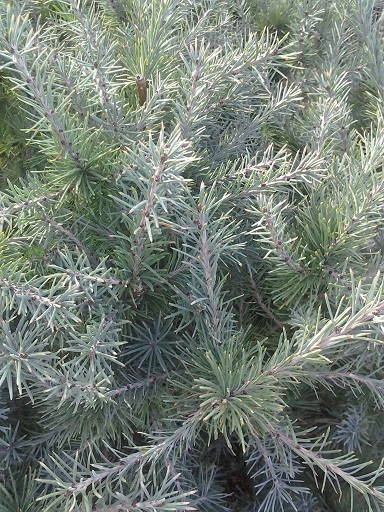UNITED STATES—’Conifer’ and ‘evergreen’ are almost synonymous. Of the two, ‘evergreen’ is the more familiar term. Some people do not know what a ‘conifer’ is. Simply speaking, an evergreen is a plant that retains foliage throughout the year, even while deciduous plants defoliate through winter. A conifer is a plant that produces seeds in cones, such as pine cones, although many are not easy to recognize as such. Actually though, not all evergreens are conifers; and not all conifers are evergreens.
Southern magnolia, glossy privet, lily of the Nile, all sorts of eucalyptus and all sorts of palms retain their foliage through winter, but none are conifers. Larch, dawn redwood and bald cypress are conifers, but are also deciduous. This can be quite a surprise for anyone expecting them to be evergreen. The foliage turns brown enough to resemble death before defoliation, although larch can get quite colorful in autumn where winters are cooler.
Now that flowers for cutting are scarce, evergreen foliage is popularly cut and brought into the home instead. Here in California, not many of us have fir or spruce out in the garden. Redwood, pine, cypress and cedar (deodar and Atlas) are more common. Leyland cypress, Western red cedar, incense cedar and the various chamaecyparis are not as common, but are just as effective. Incense cedar as well as some of the junipers (unshorn) are particularly aromatic.
Since the various hollies are uncommon here, Californians prefer other evergreens with berries, such as firethorn (pyracantha), contoneaster and toyon. Incidentally, toyon had been so recognized as a substitute for holly that it had historically been known as California holly, and is the origin of the name of Hollywood. Magnolia grenades (fruiting structures) can function like weird pine cones. Southern magnolia has big and glossy leaves with rusty orange undersides. They can provide bold color and texture, even if they have dried to a rich brown.
There are of course no rules for cut foliage. Anything that is still foliated and appealing in the garden may work nicely in the home. Ferns are an obvious choice, although some drop spores that stain fabric. Various pittosporums, podocarpus, eucalyptus, New Zealand flax and even the leaves of bird of paradise are all worth a try.
Highlight: larch
Climate is why the European larch, Larix decidua, is so rare here. It prefers cooler weather in both winter and summer, and more humidity. Foliage can roast if too exposed through summer. Small trees that are partly sheltered or partly shaded by larger trees have the best color and foliar density. Larch are innately reliant on somewhat regular watering, so are not drought tolerant. The mildly cool weather of autumn is enough to brown the formerly bluish foliage, which falls shortly afterward.
In the wild, larch trees can get as tall as other big coniferous trees. However, the many different garden varieties stay much smaller. Some are very pendulous. A few have contorted stems. Of the few that can sometimes be seen locally, most are compact dwarfs that grow more like low and dense shrubbery than trees. Some get only two or three feet tall and broad, and grow very slowly. These can stay in containers or planters for many years.
By Tony Tomeo






